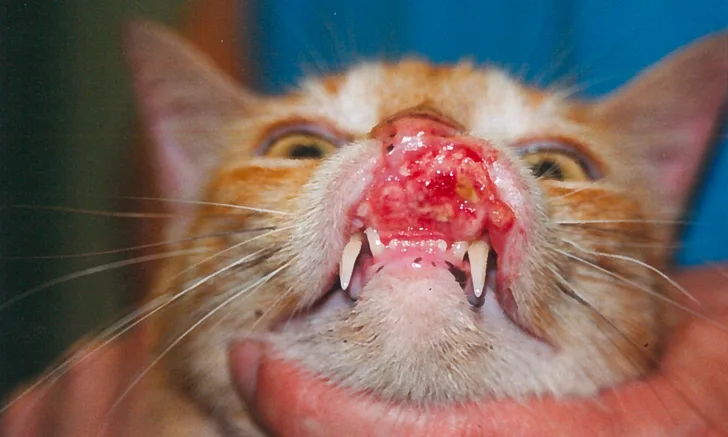Image Gallery: Eosinophilic Granuloma Complex Lesions in Cats
Michelle Woodward, DVM, MS, DACVD, Louisiana State University

Feline eosinophilic granuloma complex (EGC), a dermatologic reaction pattern in cats, frequently develops secondary to a primary disease, the most common being allergic hypersensitivities (eg, fleabite, cutaneous adverse food reaction, environmental, mosquito bite). Additional proposed causes involve infectious agents (ie, bacteria, viruses, dermatophytes, parasites),1 with rare cases being reported as idiopathic. Lesions may present as eosinophilic plaques, eosinophilic granulomas, and indolent ulcers. Although mosquito bite hypersensitivity has not classically been considered part of the EGC, some dermatologists believe it may be a manifestation of that complex.2
Therapy for EGC focuses on identifying potential underlying cause(s). While many affected cats may improve with steroid therapy or systemic antibiotics alone,3 typically these patients regress after discontinuation of treatment if the underlying disease has not been identified. Diagnostic procedures, including biopsy, may be necessary if a patient fails to respond to treatment or if the diagnosis of EGC is questionable.

FIGURE 1
Young adult cat with multifocal eosinophilic plaques, relatively common lesions that are often pruritic. Lesions may be single or multifocal, sometimes raised, and commonly occur on the ventral abdomen, flanks, and medial thighs. Licking can contribute to lesion formation,4 but some areas (eg, near skinfolds) may not be as accessible to cats. Thus, depending on lesion location, areas of skin between plaques may be unaffected.